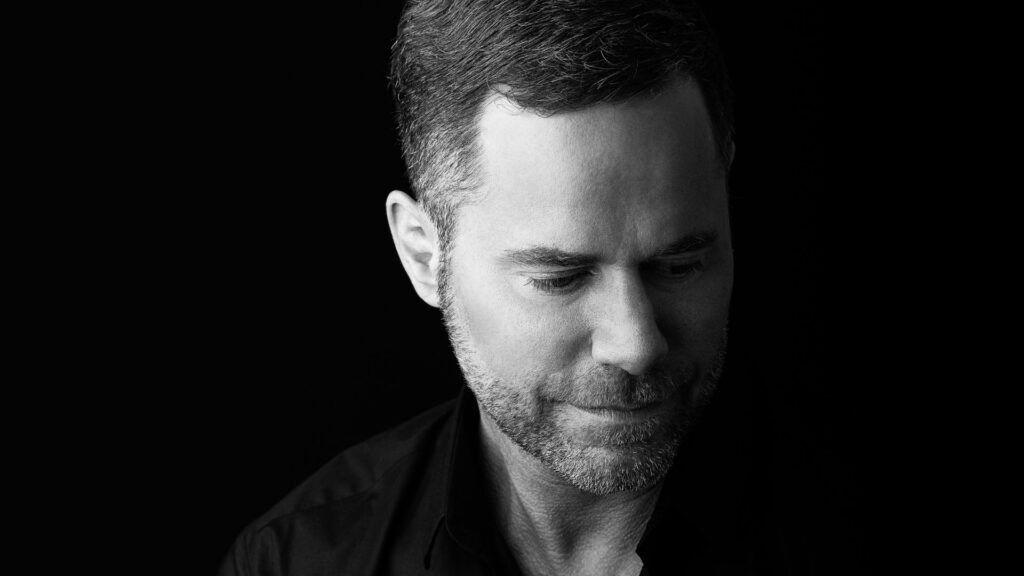Classify Your Hair Thinning and Loss
Stages of Hair Thinning and Loss
The Norwood Scale breaks male pattern baldness down into seven stages, numbered 1 through 7. Each stage may be further broken down into sub-categories, presenting a dozen total images for comparing the hair thinning in the illustrations to what you see when you look in the mirror.
Class 1
This represents a head with no visible hair thinning. Think of it as the base template.
Class 2
This shows the beginning of some retreat at the temples and possibly the forehead, often referred to as a receding hairline.
Class 3
Temporal recession becomes more pronounced, and the hairline can push back farther from the front.
Class 4
In addition to more recession in the front and at the temples, possibly leading to a pronounced widow’s peak or a deep field of bare skin or sparse hair, advanced hair thinning on the crown can create what is commonly known as a bald spot.
Class 5
The hair thinning at the temples, front hairline, and crown begin to converge at this stage.
Class 6
This image depicts near-total loss on the front, upper sides, and crown of the head. These three areas of bare skin or sparse hair have met, creating an overall appearance of baldness.
Class 7
Hair is gone from the top and front of the head, with just a single remaining strip that runs from one ear, around the back of the head, to the other ear.
How to Use the Norwood Scale
The Norwood Scale can give you an idea of your own hair thinning progression, but you should still visit a professional who can assess the stage that most closely approximates your degree of loss and recommend a treatment that will yield healthy, full, natural-looking results.
What Causes This Progression?
Men who experience male pattern baldness are suffering from a genetic- and hormone-based problem that causes follicles to shrink over time. The hairs that grow from these follicles thin and shorten until they disappear entirely due to a lack of production.
It’s important to note that not all hair thinning and loss is caused by androgenic alopecia. Environmental factors such as diet and stress can cause hair to fall out, as can certain medical conditions, which may trigger rapid or patchy hair loss, create brittle hair, or cause skin irritations. A doctor can help make a diagnosis in these cases.
The Norwood Scale: A Bay Area Hair Loss Resource
The most common cause of hair thinning and loss in men is a hereditary condition known as androgenic alopecia. Though this problem may manifest in a male adult at any age, and it proceeds at its own pace in each individual, it does progress in a known pattern, giving it its more common name: male pattern baldness. Most typically, the recession leads to the creation of an “M” shape at the hairline, which eventually pulls back into a “U,” causing the remaining hair to resemble a horseshoe.
Since the increasing severity of a man’s hair thinning and loss via androgenic alopecia is roughly predictable, hair experts over the years have developed and refined a baldness classification system known as the Norwood Scale, which allows men to find their degree of hair thinning on a standardized chart. Identifying the stage of a man’s hair loss can help him work with professionals, such as Dr. David Lieberman and Dr. Sachin Parikh, to develop the best plan for treatment to preserve his remaining hair and even bring hair back to where it was lost.
What Can Be Done About Hair Thinning and Loss?
Men with androgenic alopecia have hair preservation and restoration options at every stage depicted on the Norwood Scale. The earlier treatment begins, the more options may be available for ideal results, but some degree of restoration is possible, even for men who have reached Class 7.
Many men find great success with follicular unit extraction, an advanced method that involves taking healthy hair from baldness-resistant areas of the scalp and transplanting it to the areas where hair is thinning or lost. This strategy has been the basis of many treatments throughout the years, but Dr. Lieberman and Dr. Parikh use the latest automated technology and advanced techniques for unparalleled precision and positive results.
Talk to the staff at the L&P Aesthetics Center for Hair Restoration to learn more about non-surgical options to treat hair thinning and loss, including medications, innovative therapies such as L&P Stimulate, and more.
Charting Hair Thinning in Women
Though doctors use the Norwood Scale as the standard for charting hair thinning in men, they use the Ludwig Scale for measuring the progression of androgenic alopecia in women. While male pattern hair loss typically begins as a receding hairline and a growing bald spot, female pattern hair loss is a unique condition and tends to appear as generalized hair thinning on the sides or top of the head.
Hair Growing to Hair Falling Out: The Life of a Follicle
Learn About Your Hair’s Natural Cycle
Hair falling out may trigger concerns of permanent hair thinning and loss, but a life of baldness is not necessarily in your future simply because you notice some strands on your pillow or in the shower drain. Each hair on your head and body has a natural lifespan that runs from growth to shedding.
When it comes to hair falling out, you should also know that it’s a daily occurrence. Healthy people can lose anywhere from 50 to 150 hairs each day as part of the natural cycle. These are hairs shed during the final of four phases in preparation of new hair emerging. Not all of our follicles are in the same phase at the same time, which is why we don’t see all of our hair falling out at once.
Anatomy of a Follicle
A follicle is essentially a cup in the skin, at the base of which sits a hair bulb. Cells that divide in this bulb, fed by attached blood vessels and controlled by hormones, form a hair shaft that grows up and out. As humans, we have about 100,000 follicles on our scalps, and about 5 million total follicles that cover our body from head to foot.
Each follicle is also connected to glands that produce oil and nerves that help us sense when our hair comes into contact with something that moves it. Some follicles are connected to muscles that raise the hairs when we’re cold or alarmed.
As noted above, each hair moves through four phases in its own follicle, and not all follicles are in the same phase at the same time.
The Four Phases of the Hair Growth Cycle
Anagen Phase
This is a hair’s growth phase. About 85 percent of a person’s hairs will be in this active phase at once. Hair falling out due to natural causes often signals the beginning of this phase, since new growth pushes old, inactive hairs up and out of the skin.
During anagen, a hair can grow approximately half an inch each month for two to eight years.
Catagen Phase
This is a hair’s degradation or transition phase. Over the course of a little less than two weeks, a follicle will shrink in preparation of the old hair’s ejection. The shaft disconnects from its blood supply, and the shrinking follicle pushes the hair upward, closer to falling out.
Telogen Phase
This is known as the resting phase. During this period of about three months, the hair sits as the follicle recharges itself and prepares to re-enter anagen.
Exogen Phase
This is when you finally see the hair falling out, though exogen hasn’t always been recognized as a distinct phase. Technically, it is the part of telogen when the shedding physically occurs, helped along by the emerging new growth that signals the start of a new cycle.
Exceptions to the Rule
Sometimes, an external factor stresses out the body enough to suddenly shift follicles from the degradation or even growth phase into an immediate resting phase, prompting mass shedding. Hair falling out after a system shock can include up to 70 percent of the total hair on the scalp and even hairs on the body. This large amount of hair falling out is known as telogen effluvium, and it can be due to illnesses, fevers, and infections; physical or psychological stressors; labor and childbirth; thyroid or dietary imbalance; surgery; medications; and more.
Typically, patients who go through the sort of shock that can trigger telogen effluvium won’t notice hair falling out in greater numbers until weeks or months after the key event.
Since hair falling out due to telogen effluvium will slow over the next six to eight months, and new hairs will begin to emerge, treatments probably will not be necessary to restore a full head of hair. If the condition persists, however, or if there seems to be no likely reason there should be mass quantities of hair falling out, testing may be in order to determine whether there is an underlying medical condition that should be addressed.






